#fernando guerra
Explore tagged Tumblr posts
Text













Casa GAK, Porto Feliz, Sao Paulo, Brazil,
Bernardes Arquitetura
Photo: Fernando Guerra
#art#design#architecture#interiors#interiordesign#luxury house#luxury home#porto feliz#sao paulo#brasil#green roof#sustainability#bernardes arquitetura#fernando guerra#eco friendly
121 notes
·
View notes
Text



Comporta 107, Comporta, Portugal,
dEMM Arquitectura,
Photos By: FG+SG
#art#design#doorway#architecture#heavensdoorways#doors#doorsdesign#doordesign#entrance door#door#gateway#comporta#millwork#glass#portugal#dEMM arquitecture#fernando guerra#passage
12 notes
·
View notes
Photo
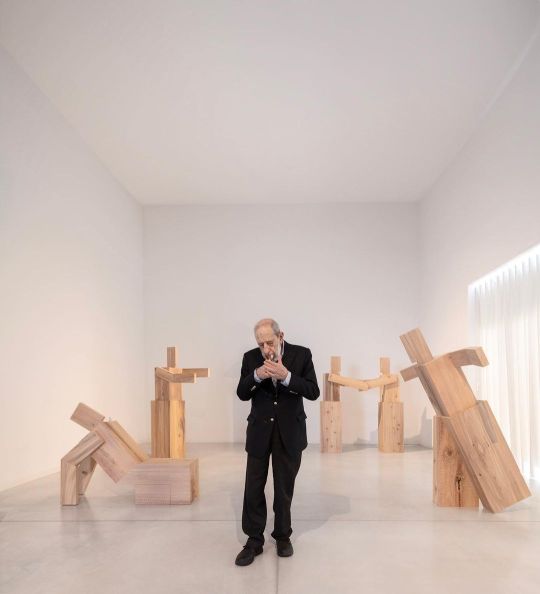
Álvaro Siza | Fernando Guerra
29 notes
·
View notes
Photo

Flag House, Whistler, 2020, by Studio MK27 via Wallpaper*
Photography Fernando Guerra
3 notes
·
View notes
Text

Siza, 2024, by Fernando Guerra. https://ultimasreportagens.com/en/
1 note
·
View note
Text
Los fans de formula 1 que odian a fernando por criminal de guerra son aburridisimos this is me & him rn
#fernando alonso without the crimes is like a day without sunshine#aparte#los deportes se trata de elegir a tu criminal de guerra y querer que gane hasta el fin de los tiempos#nadie es unproblematique~ pero decir siemore lo mismo cansa#own post
10 notes
·
View notes
Text
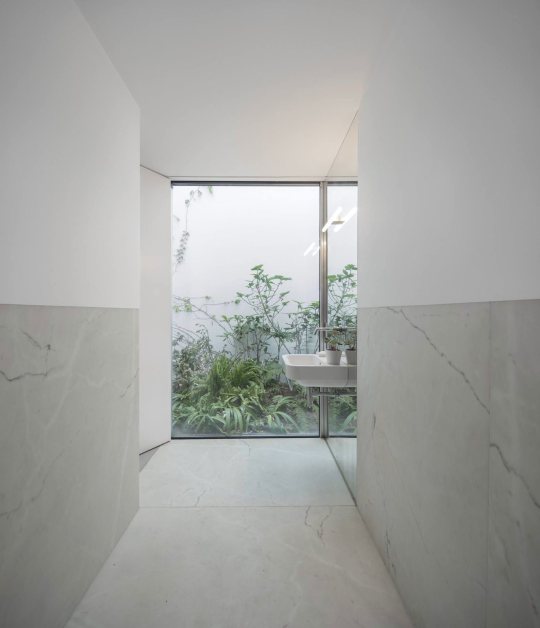
Bathroom with adjoining enclosed garden. Red House by Extrastudio. Photo by Fernando Guerra | FG+SG.
#bathroom mirror#floor to ceiling window#glass wall#marble paneling#mirror backsplash#shrub#walled garden#marble floor#marble#bathroom#floor to ceiling mirror#bathroom vanity#floating vanity#wall mounted faucet#wall mounted sink#floating sink#bathroom sink#bathroom with plants#fernando guerra fgplussg#extrastudio#interiors#interior design
21 notes
·
View notes
Text
“ Il poeta John Donne disse che nessuno dorme sul carro che lo porta al patibolo; è altrettanto vero che in tempo di guerra ci sono meno occasioni di sbadigliare (immagino che sia per questo che durante i conflitti bellici diminuiscono notevolmente i suicidi, spesso motivati da una noia ostinata). Ma via via che le società sono divenute sempre più individualiste e i loro membri sempre più egoisti, impegnati a godere di piaceri e di ricchezze sempre più a portata di mano, la guerra ha perduto molto del suo fascino tradizionale. Qualche ritardatario si entusiasma ancora alla notizia di guerre lontane e all'idea della guerra in generale, ma quando la bomba gli cade vicino o gli arruolano il figlio, allora perde tutto il patriottico entusiasmo. La gente non vuole problemi: non è che la pace le piaccia del tutto (c'è sempre un motivo per brontolare e poi, quando le cose vanno bene, ci si annoia), però vuole essere lasciata in pace. Solo nei paesi sottosviluppati, poveri, poco informati, collettivisti per religione o ideologia politica, malati di tribalismo assassino o suicida, si continua a conservare un certo spirito bellico. In quelli più sviluppati, da quando la classe operaia ha realizzato certe conquiste, già da tempo non si parla più di rivoluzioni e di guerre civili. A parte i trafficanti d'armi, i grandi finanzieri di settori industriali molto specializzati e i militari per vocazione (o quelli che senza esserlo, hanno la vocazione militare, che sono i peggiori), il bellicismo non ha più quell'approvazione popolare che prima non gli era mai mancata. Soltanto il nazionalismo estremo, la forma di collettivizzazione mentale più compatibile con l'individualismo moderno (i nazionalisti sono individualisti pudichi, individualisti di gruppo), continua a pompare adrenalina nelle vene di certi dementi ancora capaci di uccidere o di morire con entusiasmo. Ma se la guerra non piace alla maggioranza degli uomini, mi dirai, perché continuiamo a spendere tanti soldi in eserciti, caccia, carri armati e testate nucleari? Non è forse giunto il momento di proibire la guerra, cioè di renderla impossibile, di impedirla? Hai perfettamente ragione, figlio mio. Infatti si tratterebbe proprio di questo, di impedirla: basta lamentarsi e protestare soltanto. “
Fernando Savater, Politica per un figlio, traduzione di Francesca Saltarelli, Laterza, 1993¹; pp. 104-105. (Corsivi dell’autore)
[Edizione originale: Política para Amador, Editorial Ariel, S.A., Barcellona, 1992]
#letture#leggere#citazioni#guerra#saggistica#John Donne#Fernando Savater#società#umanità#politica#individualismo#Politica per un figlio#patriottismo#scritti saggistici#pacifismo#Francesca Saltarelli#antimilitarismo#utilitarismo#ideologismo#intellettuali europei#filosofi#nazionalismo#bellicismo#libri#filosofia contemporanea#società umane#educazione#saggi#filosofia morale#anni '90
31 notes
·
View notes
Text

2 notes
·
View notes
Text
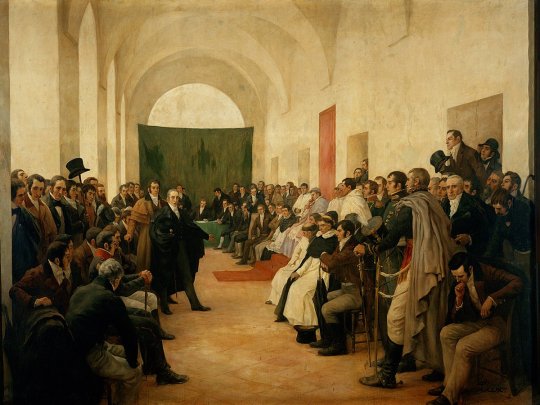
Everything that had been taking place in these first two crucial years suddenly break out in 1810. Just as in 1808, its immediate causes were also of an external order: in December of 1809, Andalucía is invaded by the French Armies. At the end of this year the situation is critical in Spain. The French offensive has multiple consequences: it provoques accusations of treason against the member of the Junta Central, the formation of an independent Junta in Sevilla and the flight to Cádiz of a part of the members of the Junta Central. On 27 January of 1810 the members of the Consulate of Cádiz take the power in the city through a new junta and put under their tutelage the rest of the Junta Central. It will be necessary English pressure to form, from them, the 29th of the same month, a Regency Council that proclaims to assume sovereign authority, while the French troops march towards Cádiz.
The same day of their self-dissolution the Junta Central sets the modalities of the Courts and redacts a new manifest to the Americans to ask the recognition of the new power. But the recognition that America had granted, because of patriotism and by surprise, to the provisional powers will be now denied to the Regency Council by almost all of South America. For most of the Americans, who follow very closely the military situation, the peninsula was irremediably lost and the Regency Council wasn't more than an spectre destined to last little or to govern under the tutelage of the Cádiz Junta, the Consulate and their correspondents from America. Even more: whatever its fate, it lacked the most elementary representation and the consent of the peoples of the two continents.
Facing this precarious power, endowed with a very uncertain legitimacy, Caracas first, Buenos Aires and the majority of the capitals of South America later, rushed to form juntas that did not recognize the new provisional peninsular government. Consciously, the Americans refer to the peninsular precedent of 1808:
Two years ago taken the throne of our captive monarch by a perfidious enemy, the provinces of Spain regained their primitive rights. Each of them erected then a supreme government independent to the others. This sacred duty that none could dispute to free peoples [...] was revoked to the peoples of America.
(...) The provisional power of the Spanish Junta Central had been legitimate, since, on the one hand, it had been formed by the representatives of the peninsular insurrectionary juntas that then carried out the supplementary representation of the "peoples" of Spain, and, on the other, because it had been recognized later by all the American kingdoms and provinces. They had sworn it in as the legitimate government, thus establishing a new mutual —and voluntary— link with that authority that provisionally replaced the king. Disappeared, this link disappeared with it, and sovereignty returns to its source, to the "peoples".
Although the constitution of juntas did not amount to the total and definitive separation of mainland Spain for its authors, its formation opened the way both to territorial disintegration in America and to the definitive break with the peninsula.
Guerra, François-Xavier (2003). El ocaso de la monarquía hispánica: revolución y desintegración. In Inventando la nación. Iberoamérica siglo XIX.
Picture: Cabildo abierto del 22 de mayo de 1810, by Pedro Subercaseaux, 1910.
#this went from ''we're doing a junta in the name of our beloved sovereign who's imprisoned by a tyrant :((( get back soon king :((''#to ''actually FUCK fernando viva la independencia'' in a matter of months lol#may revolution#historian: françois-xavier guerra#inventando la nación. iberoamérica siglo xix
9 notes
·
View notes
Text


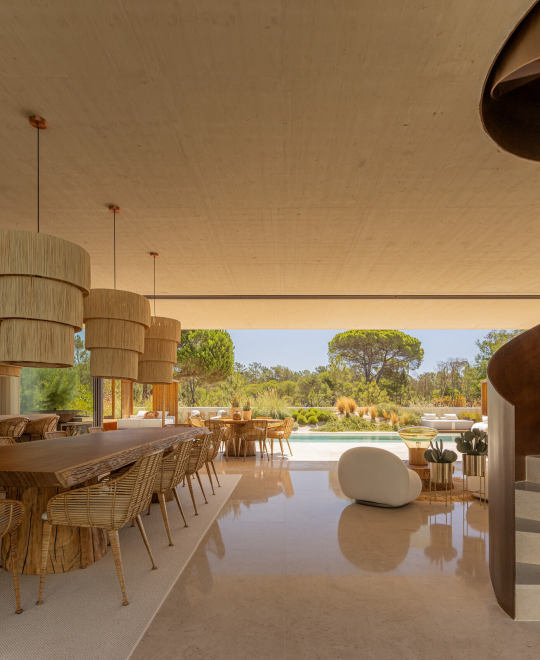
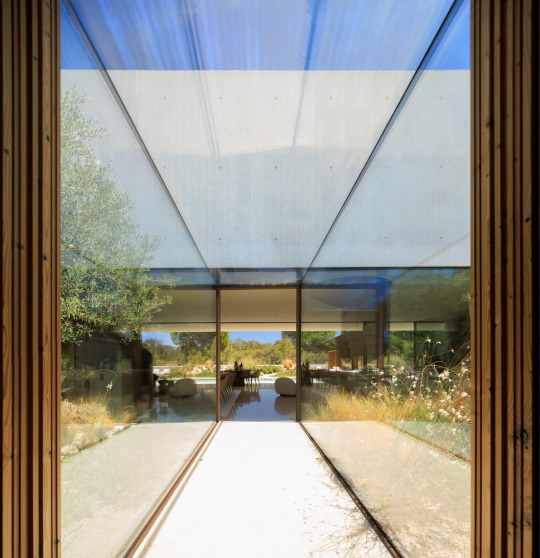






Comporta 107, Comporta, Portugal,
dEMM Arquitectura,
Photos By: FG+SG
#art#design#architecture#luxuryhouse#luxuryhome#luxurylifestyle#beach house#comporta#portugal#dEMM arquitectura#fernando guerra
147 notes
·
View notes
Quote
Mesmo frente a nossa imperfeição, o projeto de Deus segue perfeito. Sua obra se completa e se cumpre de diversas formas.
Fernando Marchi em Descanse em Deus e lute, p. 62
#Fernando Marchi#livro#frase de livro#frase#ritadcsc#God#Deus#Jesus#Espírito Santo#Cristo#cristã#cristão#cristianismo#fé#guerra
5 notes
·
View notes
Text
“Vamos, la patria nos llama” Bernardo Reyes
“Vamos, la patria nos llama” Bernardo Reyes #aperturaintelectual #palabrasbajollave @tmoralesgarcia1 @moralesgarciathelma Thelma Morales García
#AperturaIntelectual#palabrasbajollaveAI#9 de febrero de 1913#@moralesgarciathelma#@tmoralesgarcia1#Arte#“Vamos#“Vamos la patria nos llama” Bernardo Reyes#Cuento#Cultura#Jorge Luis Borges#José Emilio Pacheco#la patria nos llama” Bernardo Reyes#Libro "El seductor de la patria" de Enrique Serna#Libro "La sombra del caudillo" de Luis Guzmán#Libro "Noticias del Imperio" de Fernando del Paso#Libro "Un sueño de Bernardo Reyes"#Madero#palabrasbajollave#Personajes#Poesía#Thelma Morales García#Vaticinio de la guerra civil en México#Vicente Quirarte
0 notes
Text
"Filalexandros: La última frontera de Alejandro. Homenaje al profesor Francisco Javier Gómez Espelosín" by Antonio Ignacio Molina Marín y Mario Agudo Villanueva (coords.)
Good day I’m Elena and thanks to be here on Alessandro III di Macedonia- your resource on Alexander the Great and Hellenism! Today I’d like to share a new book that will surely interest many of you: Filalexandros: La última frontera de Alejandro Homenaje al profesor Francisco Javier Gómez Espelosín Antonio Ignacio Molina Marín y Mario Agudo Villanueva (coords.) Editorial Universidad de…
#Adolfo J. Domínguez Monedero#Antonio Guzmán Guerra#Antonio Ignacio Molina Marín#C. Fornis#Carlos García Gual#César Sierra Martín#Editorial Universidad de Alcalá#Fernando Echeverría#Francisco Javier Gómez Espelosín#Gonzalo Cruz Andreotti#Guendalina Daniela Maria Taietti#José Carlos Bermejo Barrera#José Pascual#José Vela Tejada#Laura Sancho Rocher#Leslie Lagos-Aburto#Manuel Albaladejo Vivero#Marc Mendoza Sanhauja#Mariachiara Angelucci#Mario Agudo Villanueva#Marta López Aleixandre#Pietro Janni#San José Campos#Veronica Bucciantini
0 notes
Text
Wonderkid Factory | Part 4 | A Gayá-Less New Era
#FM24 #WonderkidFactory Part 4: A Gayá-Less New Era. @ValenciaCF lose their captain and starting goalkeeper but a young side continues to impress. And the performances of star man Javi Guerra help them split the 'big 3' for the first time. Read here:
After 103 years at their historic home, Valencia Club de Fútbol bid farewell to La Mestalla as they ushered in a new era at the 55,000-capacity Nuevo Mestalla – to absolutely massive fanfare… However, the move occurred without their captain as Saudi side Al-Ahli came offered £60m for 31-year-old José Gayá. The left back departs after 14 years and 367 league games for the club, only 92 short of…
#Adriano#Alberto Kilamba#Angelo Cavaleiro#Champions League#Claudio Avella#Cristhian Mosquera#Daniel Vargas#Dinis Telehovschi#Fernando Torró#FM24#Football Manager#Football Manager 2024#Football Manager 24#Franco Mastantuono#Gabriel Silva#Javi Guerra#LaLiga#Marc Jurado#Márcio Antonio#Nuevo Mestalla#Paulo Sérgio#Roberto Lazaró#Sidney Umpeca#Valencia#Valencia CF#Yarek Gasiorowski
0 notes
